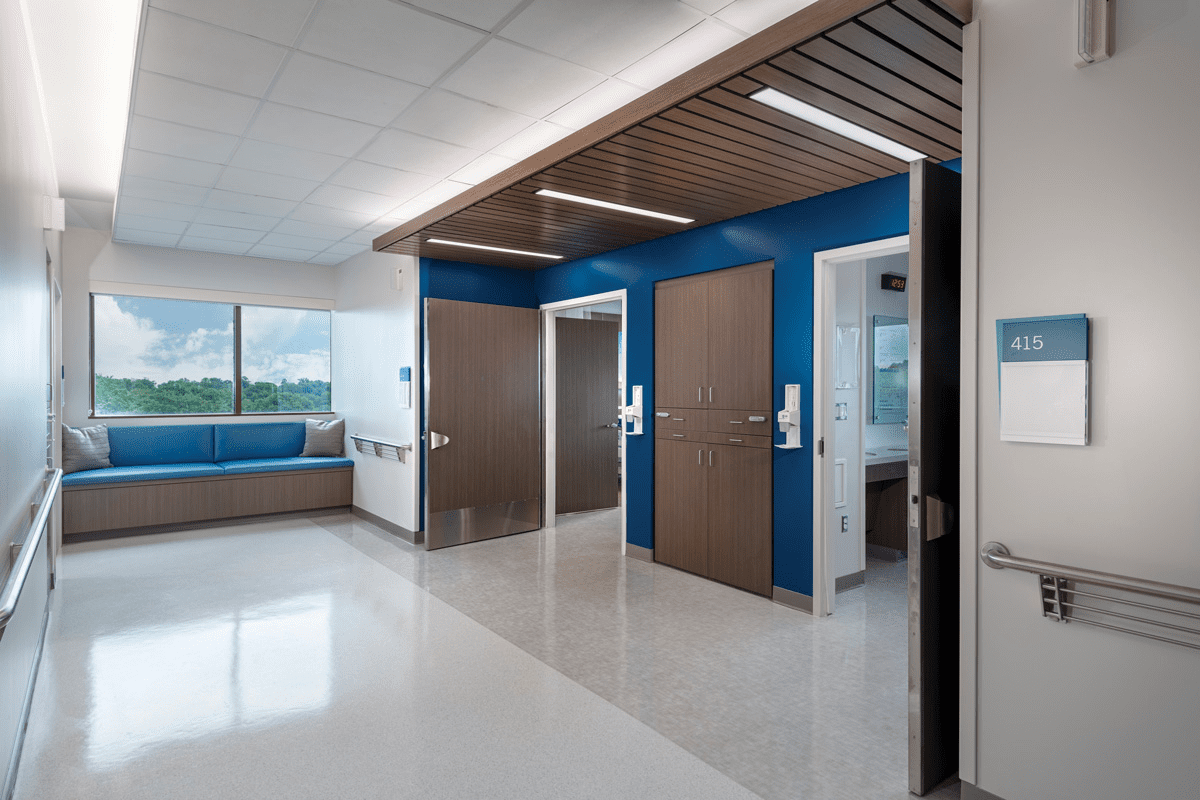Last Updated on November 27, 2025 by Bilal Hasdemir

A cancer that spreads to the skeletal system can be hard to find. But a bone scan and cancer detection test ” also known as a radionuclide bone scan ” is very effective at spotting it.
We use top-notch imaging technology to detect even small changes in bone metabolism. These changes may indicate bone scan and cancer activity or other conditions like arthritis.
A bone scan and cancer screening involves a procedure called bone scintigraphy, where a radioactive tracer is injected into your bloodstream. This helps identify areas of unusual bone activity and provides crucial insights into your bone health.
Key Takeaways
- Radionuclide bone scans detect areas of altered bone metabolism.
- Highly sensitive for identifying bone metastases from various cancers.
- The scan involves an injection of a radioactive tracer.
- Areas of bone breakdown or repair show up as “hot spots.”
- Bone changes can be due to cancer or other conditions like arthritis.
- Results are typically available within 1 or 2 weeks.
What Is a Bone Scan? The Fundamentals of Bone Scintigraphy

A bone scan, or radionuclide bone scanning, is a way doctors check bones. It helps find bone diseases, including cancer.
Definition and Purpose of Radionuclide Bone Scanning
Radionuclide bone scanning uses tiny amounts of radioactive materials. It helps doctors see bone diseases. This test shows how active the bones are.
The process involves injecting a radioactive tracer into the bloodstream. This tracer goes to the bones. A special camera then takes pictures of the bones.
When Doctors Recommend Bone Scintigraphy
Doctors suggest bone scintigraphy for many reasons. It’s used when patients have bone metastases or cancer. It also checks if cancer treatment is working.
Bone scintigraphy is very helpful. It shows the whole body, helping doctors see how much bone is affected. This helps plan the best treatment.
Fact #1: How Bone Scans Work to Detect Abnormalities

Bone scans are a key tool for finding problems in bones. They use radioactive isotopes to spot changes in bone activity. This can help find conditions like cancer.
The Role of Radioactive Isotopes in Bone Scanning
Radioactive isotopes give off radiation that cameras can pick up. In bone scans, these isotopes are attached to substances that bond with bone. When injected, they gather in areas with lots of bone activity.
Technetium-Based Tracers and Bone Metabolism
Technetium-99m (Tc-99m) is a common isotope in bone scans. It’s linked to a phosphate compound, making it stick to bone. Where bone is most active, like in cancer, more Tc-99m builds up.
| Step | Description |
| 1. Injection | The radioactive tracer is injected into the bloodstream. |
| 2. Accumulation | The tracer accumulates in bone tissue, specially in areas with high metabolic activity. |
| 3. Imaging | A gamma camera detects the radiation from the tracer, making an image of bone activity. |
Understanding how bone scans use radioactive isotopes, like technetium-based tracers, shows their importance. They help find and manage bone-related issues.
Fact #2: What Cancers Can a Bone Scan Detect?
Bone scintigraphy is a sensitive method for detecting a range of cancers. It can find cancers that start in the bone and those that spread to the bone. This is key for spotting both primary bone cancers and cancers that have spread.
Primary Bone Cancer Detection Capabilities
Primary bone cancers are rare but aggressive. Bone scans are good at finding these cancers. They include osteosarcoma, Ewing’s sarcoma, and chondrosarcoma.
Osteosarcoma is a bone cancer that makes bone matrix. Bone scans can spot the increased bone activity of osteosarcoma. This makes them a valuable tool in diagnosis.
Metastatic Disease from Breast, Prostate, Lung, Kidney, and Thyroid Cancers
Bone scans are also used to find metastatic disease. This is cancer that has spread to the bones from other parts of the body. Cancers of the breast, prostate, lung, kidney, and thyroid often spread to the bones.
Bone scans are great for tracking the spread of these cancers.
| Cancer Type | Likelihood of Bone Metastasis | Typical Bone Scan Findings |
| Breast Cancer | High | Multiple areas of increased uptake |
| Prostate Cancer | High | Osteoblastic metastases, often with a “superscan” appearance |
| Lung Cancer | Moderate to High | Variable uptake, can be osteolytic or osteoblastic |
| Kidney Cancer | Moderate | Osteolytic lesions, sometimes with a “cold” appearance on bone scan |
| Thyroid Cancer | Low to Moderate | Variable uptake, can be osteolytic or osteoblastic |
The table shows cancers that often spread to the bone and what bone scans find. Knowing these patterns helps doctors diagnose and plan treatment.
Fact #3: The Bone Scan Procedure: What Patients Experience
Patients going through a bone scan can look forward to a simple process. We’ll walk you through what happens, from start to finish.
Preparation and Injection of the Radiotracer
A radiotracer is first injected into your arm’s vein. This is usually Technetium-99m. It goes to bones that are very active, like those with cancer.
The injection is quick and might feel a bit uncomfortable. Then, you’ll wait a few hours for the radiotracer to spread through your bones.
The Imaging Process with Bone Scintigraphy Machines
After the radiotracer spreads, it’s time for the imaging. You’ll lie on a table that slides into a bone scintigraphy machine. This machine picks up the gamma rays from the radiotracer.
The whole imaging takes about 30-60 minutes. You’ll need to stay very quiet to get clear pictures.
Post-Procedure Safety and Recovery
Once the imaging is done, you can go back to your usual day. The radiotracer is safe and leaves your body in a few days, through urine and feces.
It’s important to follow any instructions from your healthcare team. This helps keep you safe and ensures the test results are accurate.
| Procedure Step | Description | Duration |
| Radiotracer Injection | Injection of Technetium-99m into a vein | A few minutes |
| Waiting Period | Allowing the radiotracer to distribute | 2-4 hours |
| Imaging Process | Scanning with a bone scintigraphy machine | 30-60 minutes |
Fact #4: Bone Scan and Cancer: Sensitivity vs. Specificity
Finding cancer early is key, and bone scans help a lot. They show how good they are at finding cancer and compare to other tests like X-rays. We’ll look at their strengths and weaknesses.
Why Bone Scans Can Detect Cancer Earlier Than X-rays
Bone scans are great at spotting changes in bone activity. They find cancer before X-rays can. This is because they use a special tracer that shows up in active bones.
Early detection is vital for better treatment. Bone scans are a big plus because they catch cancer early.
Limitations: When Bone Scans May Miss or Misidentify Cancer
Even though bone scans are good, they’re not perfect. They can find problems but not always say it’s cancer. Things like arthritis or broken bones can also show up as positive.
The table below shows how bone scans and X-rays compare for finding cancer.
| Diagnostic Method | Sensitivity for Cancer | Specificity for Cancer |
| Bone Scan | High | Moderate |
| X-ray | Moderate | High |
It’s important to know the strengths and weaknesses of bone scans. They’re good for finding cancer early. But, we must look at the whole picture of the patient’s health.
Fact #5: Will a Bone Scan Show Arthritis? Understanding Non-Cancer Findings
Patients often ask if a bone scan can show arthritis. Yes, it can. Bone scans detect changes in bone metabolism. This includes changes from arthritis and other conditions.
It’s important to understand bone scan results. The scan shows areas of increased bone activity. This can be from cancer, arthritis, fractures, or other bone issues.
Bone Scan Arthritis vs Cancer: Distinguishing Patterns
To tell arthritis from cancer on a bone scan, look at the pattern of tracer uptake. Arthritis shows a spread-out pattern around joints. Cancer, on the other hand, has intense, focused areas.
- Arthritis: Shows symmetrical uptake around joints, matching joint degeneration.
- Cancer: Has focal “hot spots” anywhere in the skeleton, not just in joints.
Other Conditions That Cause Positive Bone Scan Results
Arthritis and cancer aren’t the only things that show up on a bone scan. Fractures, bone infections, and metabolic bone diseases can too.
Healthcare providers must look at bone scan results with the patient’s whole story in mind. This includes symptoms, medical history, and other tests.
- Fractures: Recent fractures show intense uptake on bone scans.
- Bone infections: Osteomyelitis and other infections cause increased uptake.
- Metabolic bone diseases: Conditions like Paget’s disease show unique patterns on scans.
Fact #6: Interpreting What a Bone Scan Reveals
Understanding bone scan results is complex. It needs a deep grasp of the technology and the patient’s health situation.
We look for where the radioactive tracer builds up in bone scans. This buildup can show many things, like cancer, arthritis, or fractures.
Understanding “Hot Spots” and “Cold Spots”
Bone scans show where the tracer is more or less than usual. “Hot spots” mean more tracer, showing active bone areas. This could be cancer, fractures, or infections.
“Cold spots” show less tracer, which is less common. They might mean bone lesions or suppressed activity.
The Importance of Clinical Context in Diagnosis
It’s not just about finding hot or cold spots. We need to understand what they mean for the patient’s health.
For example, a cancer patient might have hot spots from metastasis. But a patient with arthritis might have hot spots in their joints from inflammation.
We look at the patient’s medical history, symptoms, and other tests to correctly read the bone scan.
When Additional Imaging Is Necessary
At times, bone scans don’t give a clear answer. Then, we might need CT scans, MRI, or X-rays for a better look at the bones.
| Condition | Bone Scan Appearance | Clinical Context |
| Cancer Metastasis | Multiple hot spots | History of cancer, systemic symptoms |
| Arthritis | Hot spots in joints | Joint pain, swelling, limited mobility |
| Fracture | Hot spot at fracture site | Recent trauma, pain at fracture site |
By combining bone scan results with the patient’s health and sometimes more images, we can make better diagnoses. This helps us create effective treatment plans.
Fact #7: Bone Scans Compared to Other Diagnostic Methods
Bone scans are used to find bone problems, but how do they stack up against CT scans and MRIs? We’ll look at the benefits of bone scintigraphy and when it’s the best choice.
Bone Scans vs. CT Scans and MRIs
Bone scans, CT scans, and MRIs help find bone issues, but they do it differently. CT scans use X-rays for detailed body images. MRIs use magnetic fields and radio waves for soft tissue images, including bones.
Bone scans use radioactive material to show bone activity. They’re great for finding widespread bone disease, like cancer spreading to bones.
| Diagnostic Test | Primary Use | Advantages |
| Bone Scan | Detecting bone metastases, assessing bone activity | High sensitivity for detecting widespread bone disease, relatively low radiation dose |
| CT Scan | Detailed imaging of bone and soft tissue structures | High-resolution images, useful for detecting fractures and structural abnormalities |
| MRI | Imaging soft tissues, including tumors and infections | High-resolution images of soft tissues, useful for detecting conditions affecting the marrow and surrounding tissues |
When to Use Bone Scintigraphy vs. Alternative Tests
Choosing between bone scans and other tests depends on the situation. For widespread bone metastases, a bone scan is often the first choice. It’s very good at finding many bone issues at once.
But, for known tumors or fractures, a CT scan or MRI might be better. They give detailed views of specific areas. The right test depends on the patient’s needs and the situation.
Conclusion: The Critical Role of Bone Scans in Cancer Management
Bone scans are key in fighting cancer. They help doctors find and track cancer in bones. This is very important for cancers like breast, prostate, and lung.
They help doctors spot problems early. This means they can plan better treatments. The critical role of bone scans is also seen in finding hidden fractures and stress injuries.
Doctors use bone scans to understand bone health. This helps them tell cancer from other bone problems. This leads to better diagnosis and treatment.
In short, bone scans are a big help in cancer care. They give doctors the info they need to help patients. As we keep working on cancer treatments, bone scans will keep being a key part of care.
What is a bone scan, and how does it work?
A bone scan is a test that uses a tiny bit of radioactive material. It helps find problems in bone activity. A special camera then shows these areas.
What cancers can a bone scan detect?
A bone scan can find many cancers, like bone cancer and cancers that spread to bones. It’s great for spotting bone problems that X-rays can’t see.
Will a bone scan show arthritis?
Yes, a bone scan can spot arthritis by finding active bone areas. But, it can be hard to tell if it’s arthritis or cancer. We look at other signs too.
What is the difference between a “hot spot” and a “cold spot” on a bone scan?
A “hot spot” means an area is very active, like with cancer or infection. A “cold spot” means it’s less active, which can be from certain bone problems.
How does a bone scan compare to other diagnostic imaging methods like CT scans and MRIs?
Bone scans are great for seeing bone metastases and the whole skeleton. CT scans and MRIs give detailed views of specific spots. But, bone scans show the big picture, which is key in cancer care.
Is a bone scan a safe procedure?
Yes, bone scans are safe. The tiny amount of radioactive material used is low risk. We make sure you’re safe, and the benefits are worth it.
What should I expect during a bone scan procedure?
During a bone scan, you’ll get a small injection that might feel a bit. Then, you wait before lying down for images. It’s usually easy, and you can go back to normal activities soon.
Can a bone scan detect bone cancer?
Yes, bone scans can find bone cancer and cancers that spread to bones. It’s a key tool in diagnosing and managing bone cancer.
What is radionuclide bone scanning?
Radionuclide bone scanning is another name for bone scans. It uses a radioactive tracer to find bone problems, helping us diagnose and treat bone issues.
How do I prepare for a bone scan?
Preparation for a bone scan is simple. You might need to remove metal items and tell your doctor about your meds and health conditions.






